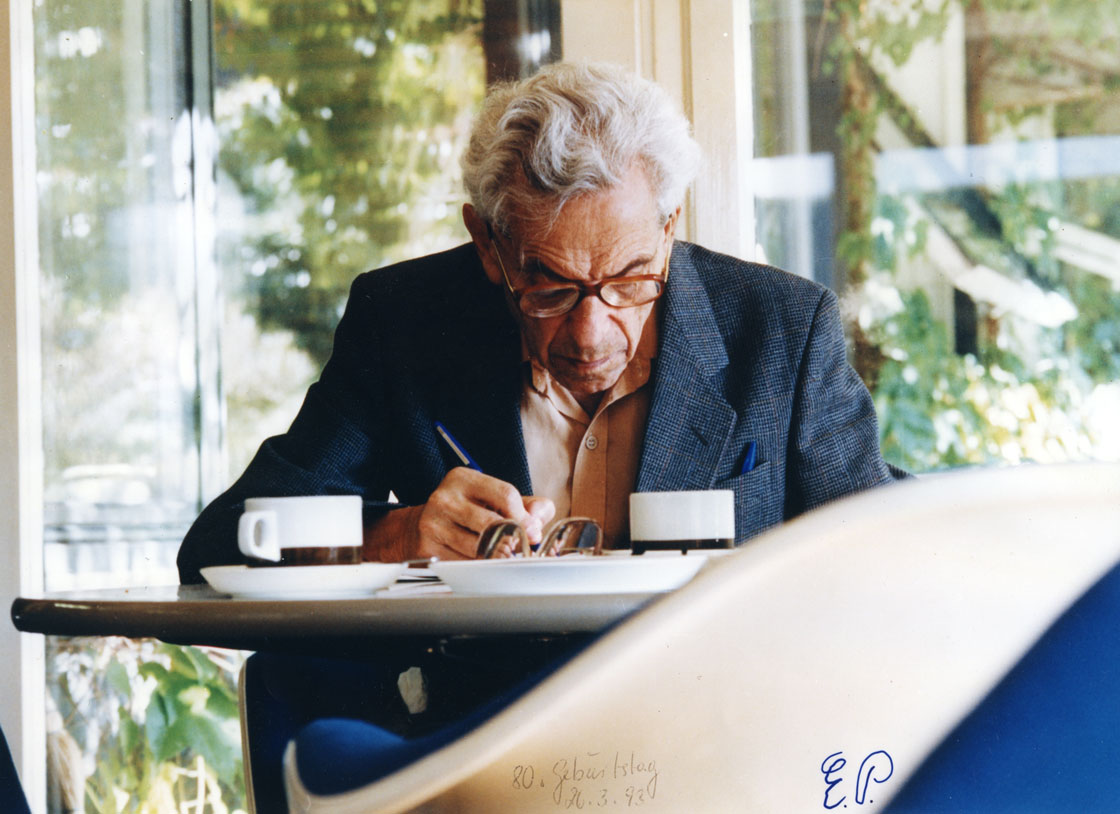
Most mathematicians will tell you that they solve problems because of the excitement of discovery. But sometimes the promise of a small amount of pocket money doesn't hurt.
I recently wrote an article on the topic “
The Riddle of Cunning Relations is nearing a happy end, ” where I described a breakthrough in the “happy end” task that began in the 1930s as a project that was worked on by three young friends. Two of them then got married - hence the name.
And the third mathematician, Pal Erdös, was probably the most notorious mathematician of the 20th century. Yerdosh spent almost his whole life, spending the night at the homes of other mathematicians and existing on small money, received by him for speaking at universities around the world. He also liked to invent mathematical problems and offer rewards to those who can solve them.
“It became a habit for him to say something like: 'Here’s a nice little task, I thought about it, and I don’t understand how to solve it. Maybe this is a $ 25 task, or maybe $ 100, ”says
Ronald Graham , a mathematician at the University of California at San Diego, a long-time friend of Erdös.
Offering small awards, Erds continued the tradition that flourished at the beginning of the 20th century in Poland. Young mathematicians gathered in a cafe there, they were measured by the power of the mind and expanded the boundaries of science. This is how the Italian mathematician Jean-Carlo Roth describes such a scene in his essay
Lost Cafe :
Between a brandy glass and a cup of coffee, they expounded (and often decided) what turned out to be an outstanding mathematical theorem of the time, and the sketches of these theorems were casually done on the marble surfaces of coffee tables in the evenings, in the process of loud, impetuous disputes.
In that culture, mathematicians decided to assign a prize to a new problem — a bottle of wine or lunch for someone who could “pull a sword out of a stone.”
Erdös continued this tradition. For his life, he offered rewards for hundreds of tasks invented by him. Prizes ranged from $ 25 to several thousand, depending on how he estimated the complexity of the task. Today, Graham manages a small fund left by Erdös, who died in 1996, to honestly give the promised prizes.
In 1974, Erdös paid the first large sum of $ 1000 to Hungarian mathematics
Andre Semeredi for the problem put forward by Erdös several years before. Semédémy took on this task because “he said that the money would definitely be useful to him,” says Graham. Decades later, Céméridi will receive the Abelian Prize, which is usually called the “Nobel Prize in Mathematics,” for work that grew out of the solution of that Erdos problem.
Later, Erdös, or rather his foundation, helped pay a prize of $ 10,000 to mathematicians James Maynard, Ben Green, Kevin Ford, Serey Konyagin and Terry Tao for evidence regarding the
intervals between consecutive prime numbers . Graham said that when Erdos first offered a prize worth $ 10,000, he considered this move "rash." But as a result, Graham himself added $ 5,000 for the prize.
Erdos has never had a bank account, so Graham was also involved in his personal finances, both before and after Erdos's death. Erdös just sent Graham the checks he received for his speeches, Graham put them in the bank, and Erds took as much as he needed when he occasionally traveled to New Jersey where Graham lived.
In 1998, Graham and his wife, a mathematician
Feng Chang , wrote
Erdös on graphs: his legacy of unsolved problems , which collected more than
200 Erds
problems in the field of graph theory. Erdös also formulated a set of problems in number theory, but no one gathered them together. Since then, Graham and Chang have paid only three prizes.
The “happy ending” task was priced at $ 500, and the new result came very close to proving the original theorem from the 1930s. Graham says he admires the new work and would like to somehow reward its authors. But the almost complete proof is very different from the full, and making such difficult decisions is the task of the judge. “If I give a prize for this, it will be difficult to figure out where to stop,” says Graham.